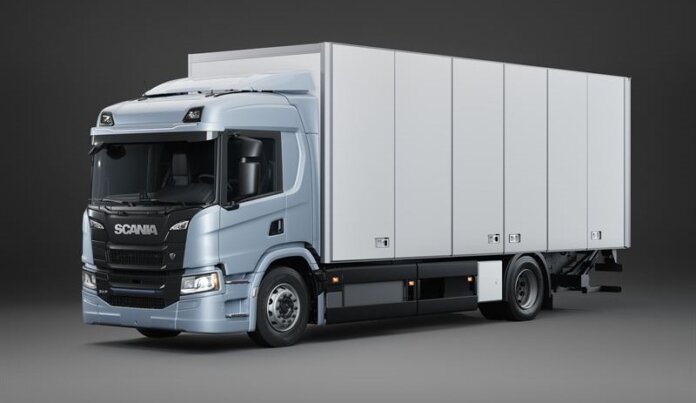Scania continues to expand its battery electric vehicle (BEV) truck line by introducing more electric trucks, axle configurations and cab alternatives, plus a number of power take-off (PTO) solutions.
“We are steadily adding more and more customer value and specification choices with our continuous introductions,” says Fredrik Allard, senior vice president and head of E-mobility at Scania. “The customers reward us with increased interest since it is now obvious how well these trucks serve and behave in actual operations and how truly appreciated they are among drivers. We constantly hear stories about drivers that were skeptical at first, but then fell in love with their electric trucks.”
Scania is offering a tandem bogie axle for BEVs, which means that tippers, hook lifts, concrete mixers and other rigid-based applications can be specified without having to sacrifice traction or load-carrying capacity. The company also introduced a number of different PTO solutions for powering hydraulics or other bodybuilder equipment.
In addition, the two versions — 210 and 240 kW — of the electric EM C1-2 being introduced have a perfect fit with certain construction-oriented operations, since the power levels (285 or 326 hp) are right in line with the typical specification for trucks used by municipalities. The EM C1-2 is physically shorter than its more powerful siblings, which creates space for batteries and/or equipment such as supporting legs.
For many lighter operations, the BEVs combine low weight with high power output, lots of torque and smooth power delivery with two gears. Ideal for operations in urban distribution, the trucks are equally suited for other municipal applications such as maintenance. For a typical distribution truck, the designation would be Scania 24 P (if it is the 240-kW version).
“It is the 9-liter engine equivalent if I were to do a diesel comparison,” says Allard. “It’s the kind of electric machine that fits in an endless number of operations by being light and flexible, yet also powerful. It has one single permanent magnet, two gears and is really ‘torquey’ for its size. It offers drivability and the smoothness that drivers have come to expect from electric powertrains.”
The market for EVs is maturing faster in some areas than others. Most of this is related to the availability of a charging infrastructure and access to power supply. Finding the right charging solution does not have to be complicated, though. Scania can guide the customer through the whole process and help set up the right charging solution.
“It’s a common misconception that charging is more complicated than it actually is,” says Allard. “Many customers will do fine with a standard depot charging solution that we can guide them in designing and building.”
Scania’s BEV batteries will last for 1.3 million kilometers, or the lifetime of the truck. Their carbon footprint is about one-third of other industry vehicles since they are produced with fossil-free electricity in northern Sweden. Scania has chosen lithium-ion batteries in prismatic shapes that are assembled in Södertälje into battery packs of 416 or 624 kWh, with state-of-charge windows of approximately 83% usable energy.




